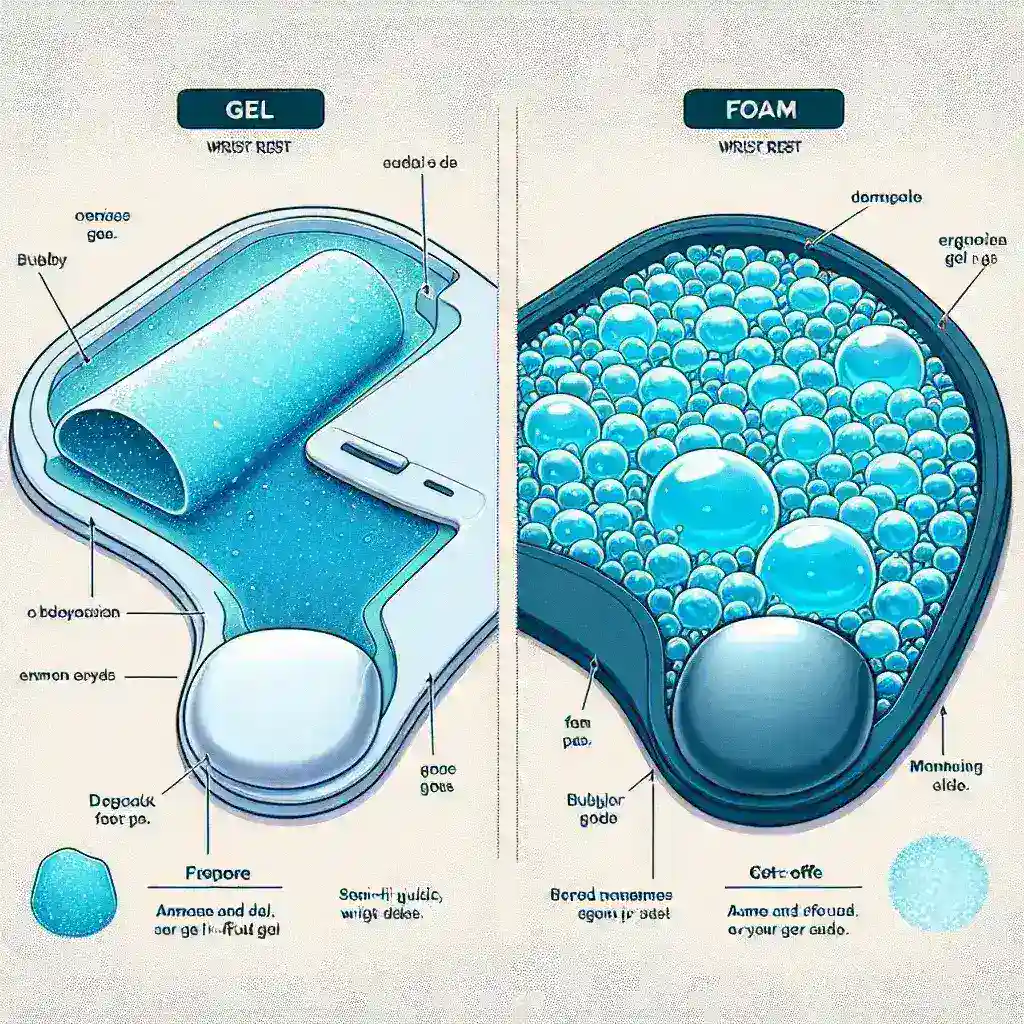Choosing the right ergonomic mouse pad can significantly affect your comfort and productivity, particularly if you spend long hours working on a computer. Two of the most popular wrist rests available are gel and foam. Each type has its distinct characteristics, advantages, and disadvantages. In this article, we will delve into the differences between gel and foam wrist rests and help you identify which is better for your specific needs.
| Aspect | Gel Wrist Rest | Foam Wrist Rest |
|---|---|---|
| Material | Gel with a soft exterior | Polyurethane foam |
| Comfort | Soft and cooling | Firm yet comfortable |
| Support | Excellent, contours to wrist | Good, provides steady support |
| Durability | Long-lasting, resistant to wear | Can flatten over time |
| Heat Retention | Less heat retention | Retains heat, may feel warmer |
| Maintenance | Easy to wipe clean | May require more care |
| Price | Generally more expensive | Usually more affordable |
Understanding Gel Wrist Rests
Gel wrist rests are typically made from a soft gel material encased in a smooth exterior, allowing them to provide enhanced comfort for the user. The cooling effect of gel can be particularly beneficial when working for extended periods, as it helps to maintain a comfortable wrist temperature.
Advantages of Gel Wrist Rests
- Cooling Effect: The gel material naturally dissipates heat, making it less likely for users to experience discomfort from warmth.
- Contouring Support: Gel wrist rests conform to the shape of your wrist, offering excellent support that minimizes pressure points.
- Durability: Generally, gel wrist rests maintain their shape and integrity over time, resisting wear and tear.
Disadvantages of Gel Wrist Rests
- Price: Gel wrist rests tend to be more expensive than foam options.
- Weight: Gel products can be heavier, which may not suit all users.
Exploring Foam Wrist Rests
Foam wrist rests consist of polyurethane foam that offers steady support while being slightly firmer than gel options. The lightweight nature of foam makes it a popular choice for many ergonomic mouse pads.
Advantages of Foam Wrist Rests
- Affordability: Generally, foam wrist rests are more budget-friendly compared to gel options.
- Lightweight: Foam wrist rests are easier to move and reposition when needed.
- Good Support: Offering decent support to the wrist, foam wrist rests can still help prevent strain.
Disadvantages of Foam Wrist Rests
- Heat Retention: Foam may retain more heat compared to gel, which could lead to discomfort during extended use.
- Durability: Over time, foam wrist rests can flatten or lose their supportive qualities, requiring replacement.
Which Should You Choose?
The choice between a gel and foam wrist rest ultimately depends on your individual preferences, budget, and use case. If you’re seeking something more supportive and cooling with a longer lifespan, a gel wrist rest may be the right fit. However, if you prefer a more lightweight, cost-effective option and don’t mind a bit of heat retention, then foam is a suitable choice.
Conclusion
When selecting an ergonomic mouse pad, considering the type of wrist rest is essential for your comfort and productivity. Both gel and foam wrist rests have their unique characteristics that cater to different user preferences. Ultimately, it is advisable to try out both types to find which feels more comfortable for you during extended computer usage.

